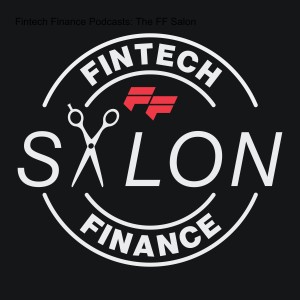
Thursday Sep 26, 2024
These Areas of Fintech Are Still Getting Plenty of Investment | FF Virtual Arena #331
These areas of fintech are still getting plenty of investment.
In a funding environment that has its ups and downs, there is definitely good news for startups seeking funding.
We had the pleasure of speaking to Andre De Haes, founder of Backed VC, to find out what being “a maverick fund” looks like in practice and what they look for in successful fintech founders and startups.
We talk about how the European funding environment has changed in recent years and much more.
A Maverick Fund
Backed VC are “determined to do European venture capital differently”. Certainly their brand sticks out as slightly more rock and roll than some of their venture capital compatriots. According to De Haes, doing things differently involves bold bets in under-invested sectors, long-term thinking, and a distinctive culture of founder engagement.
He gives examples of their early bets on blockchain gaming, an area that seemed unconventional at the time but has since produced massive valuations, particularly with investments like Axie Infinity and Immutable X. Backed’s approach is also reflected in how they interact with founders, a relationship that often includes excursions and activities, all in service of forging long-term partnerships that go beyond the traditional fund-founder dynamic.
They focus on a few specific verticals, one of which is fintech and De Haes explains that Backed’s sector choices were born out of strategic thinking. They honed in on four key multi-trillion dollar industries ripe for disruption: computational biology, manufacturing software, Fintech infrastructure, and AI-driven drug development. They’re certainly exciting on the face of it and not only do they hold tremendous potential for tech innovation but also provide Europe with a strategic advantage over the U.S. In the interview above, De Haes points out how few VCs are tackling these challenging industries and emphasizes how Backed is leading the charge in areas like AI-driven drug discovery, a field relatively untouched by VCs.
The funding landscape today
The conversation also covers the evolving funding landscape, particularly the sharp valuation drops in later-stage funding rounds. There’s definitely been a number of changes in the ecosystem recently, with more funding even coming from Private Equity. Here, De Haes provides an insightful and thorough breakdown of the post-2022 revaluation environment, explaining that while seed stage funding has only seen minor corrections, later rounds have experienced significant declines in valuation. Interestingly, he notes that these downturns provide opportunities for investors willing to cherry-pick undervalued but strong companies.
In one of the more forward-looking segments, they discuss the future of blockchain and decentralized finance (DeFi). De Haes shares his belief that the mainstream adoption of blockchain will happen largely “invisibly” through back-end applications that consumers may not even realize are leveraging blockchain technology. He envisions broader institutional adoption and even the possibility of government-backed blockchain systems in the future.
There’s also some valuable insights into what Backed looks for in founders. We’ve asked a number of other people in the industry what they look for and it’s interesting to see how their advice compares. De Haes emphasizes the importance of “founder-product fit,” grit, execution speed, and commercial acumen. He shares fascinating examples of founders like Quinn, who is revolutionizing liver therapeutics with AI, and the seasoned team behind Travisory, who are disrupting border management systems. For De Haes, it’s not just about finding brilliant founders but those with a unique “right to win” in their specific domain.
Watch the video to find out more about the London Fintech Network, and get even more detail on the above topics. It’s a really interesting insight into the world of venture capital. Watch more conversations just like this, on our website.
No comments yet. Be the first to say something!